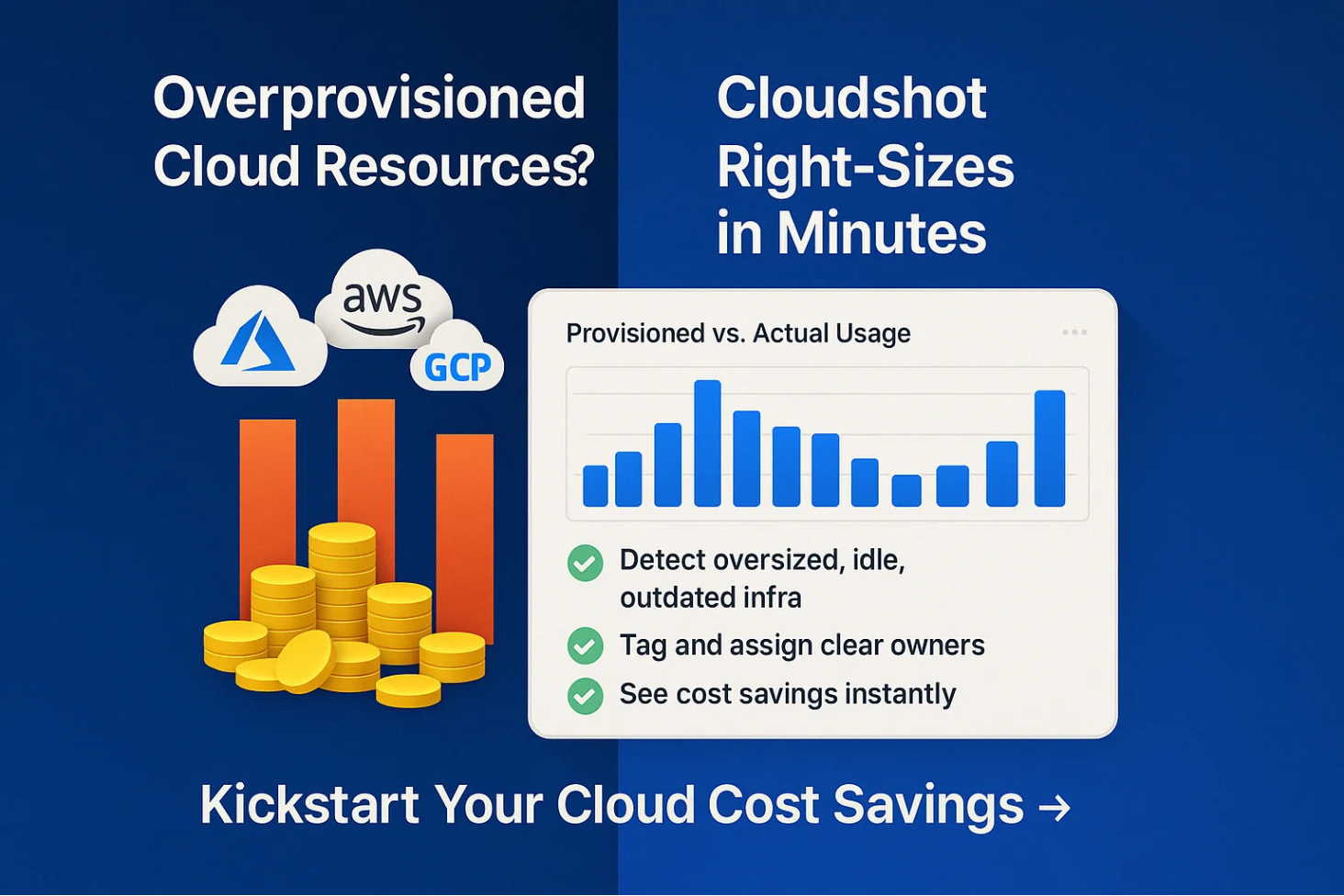"We thought we were lean. Until Cloudshot told us otherwise."
That's how the call started.
This wasn't a massive cloud-native enterprise or a startup with wild experimentation. This was a practical, fast-moving DevOps team working across two clouds, four regions, and a handful of environments.
They didn't think they had a waste problem. They weren't seeing major spikes. But their CFO kept asking the same question every month:
"Why are we still spending this much on cloud?"
The DevOps lead had no clear answer. They assumed it was "normal growth." But something felt off—so they plugged in Cloudshot.
Within the first 10 minutes, everything changed.
What They Found Wasn't Just Surprising. It Was Expensive.
Oversized VMs running at <10% CPU
Cloudshot's live infrastructure map overlaid with real-time usage made it obvious. What looked normal on paper was actually bloated—instances running 8x larger than what workloads required.
A staging cluster with production-grade resources
What was meant to be a temporary environment had quietly morphed into a full-scale deployment zone—burning through budget without delivering value.
QA environments untouched for 6 weeks
Drift detection showed several environments with no deploys, no user traffic, and no internal activity. Just compute, running silently, billing daily.
And no clear owner tied to half the infra
Tagging was inconsistent. Some resources were missing owner tags entirely. The team couldn't even tell who had provisioned them, or whether it was safe to shut them down.
What They Did With Cloudshot Changed Everything
Flagged and resized 32 instances across AWS and Azure
Once they knew what was oversized, cleanup became quick and confident. They downgraded instances, shut down idle clusters, and made lean the new default.
Got real-time usage vs provisioning in one clean view
No scripts. No spreadsheets. Just a live map showing what was provisioned vs what was used. That alone changed the way they reviewed infrastructure.
Created accountability by tagging every resource by team
Cloudshot's role-based tagging made ownership crystal clear. Teams could now see their footprint, fix their waste, and defend their infrastructure.
The bottom line:
Within 3 weeks, they had reduced their cloud bill by 18%.
- No broken services
- No feature slowdowns
- Just waste removed—quietly and effectively
The Bigger Lesson: Waste Isn't Always Loud
Sometimes cloud waste hides in plain sight. Not because teams are reckless. But because they're busy. Busy delivering, deploying, responding to incidents, launching features.
And without the right lens, even the most diligent team misses what's hiding under the surface.
That's why we built Cloudshot.
Not just to automate alerts. But to give teams the clarity to see what's actually going on in their cloud infrastructure—in real time.
With Cloudshot, You Can:
Visualize your provisioned vs actual usage across AWS, Azure, and GCP
See every deployed instance across clouds, stacked side-by-side with real-time usage data. Instantly spot gaps between what's running and what's actually needed.
Detect oversized, idle, or outdated resources automatically
Our engine monitors usage trends over time and flags anything underutilized, unused, or abandoned. No more guessing—just a visual report of what's ready to downsize or decommission.
Assign ownership to every resource—so nothing hides
With team-based tagging and smart grouping, every resource is tied to a real person or service. Now your teams know what's theirs—and what needs attention.
Act on waste quickly, with optimization insights you can trust
Cloudshot doesn't just alert you. It shows you what to resize, remove, or restructure—based on usage and impact. Less ambiguity, more confident action.
The simple truth:
This customer didn't change their cloud provider. They didn't rewrite their apps. They just saw what they were running—and made better decisions because of it.
Start your free trial and see what's hiding in your cloud.
Take control of your cloud spend today.
